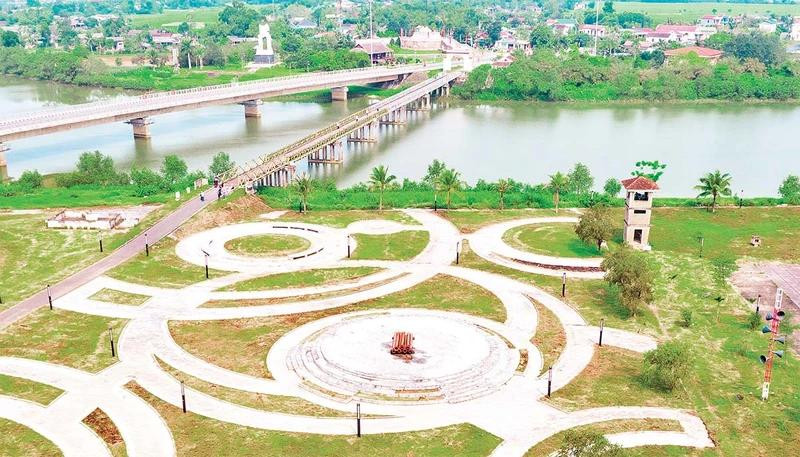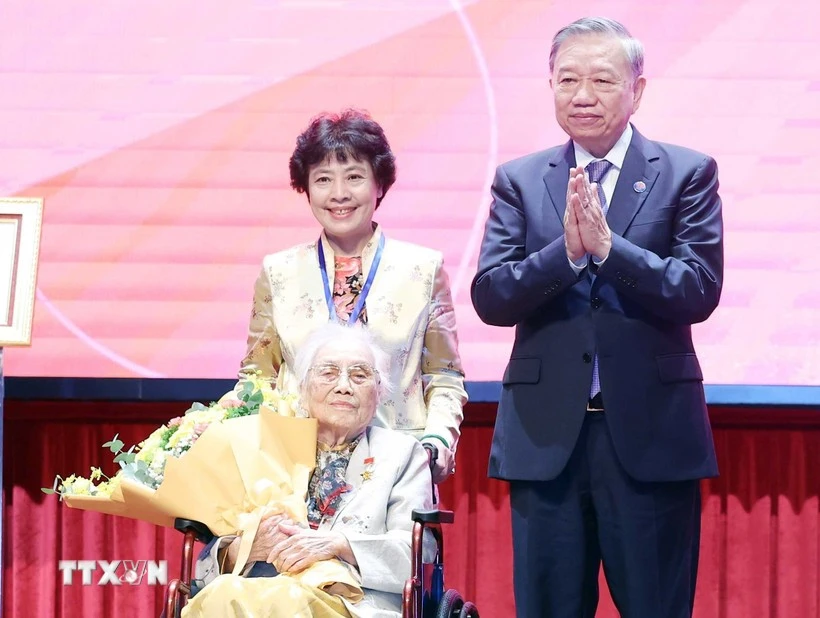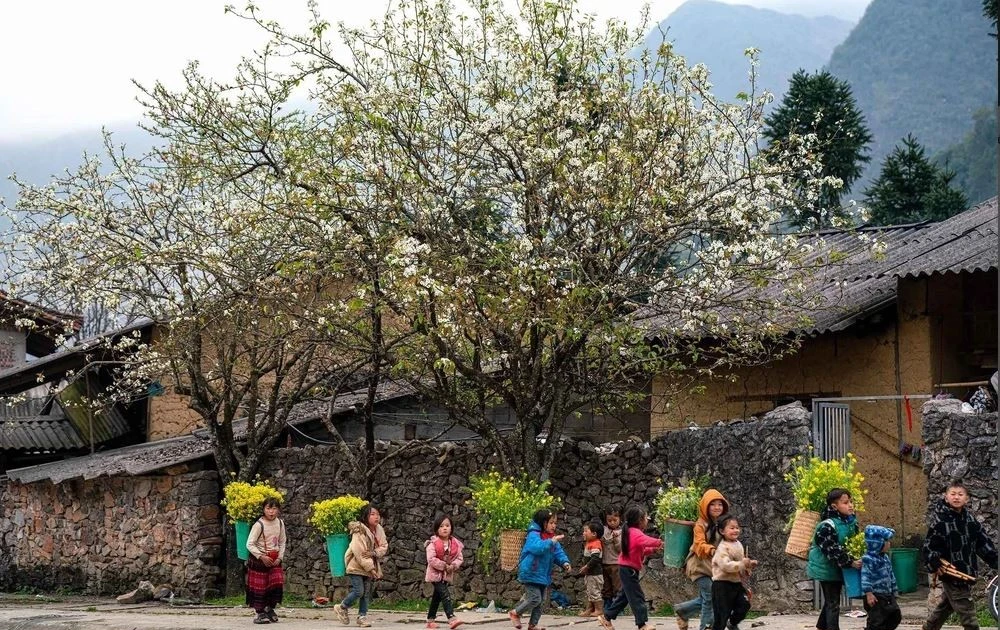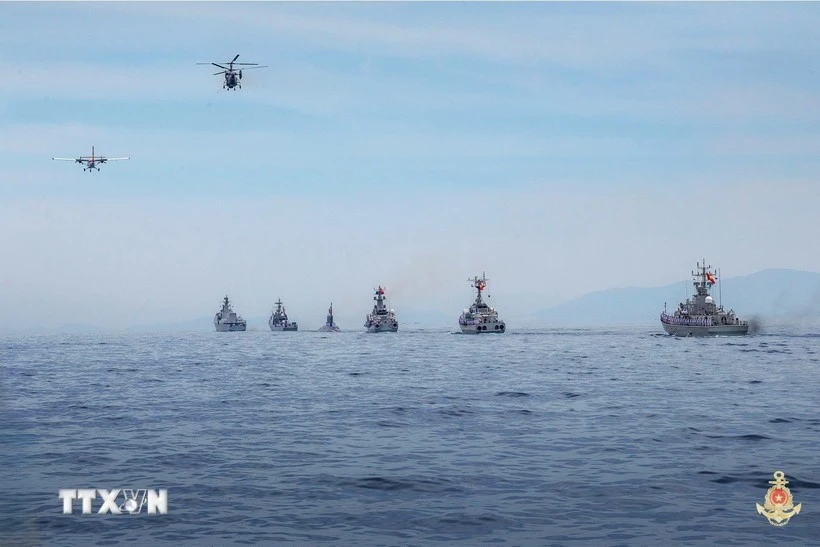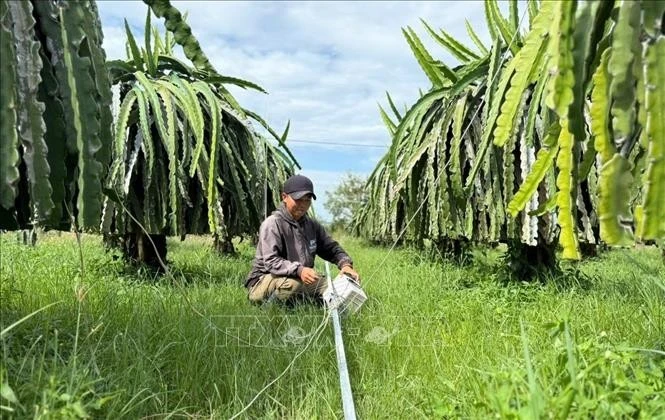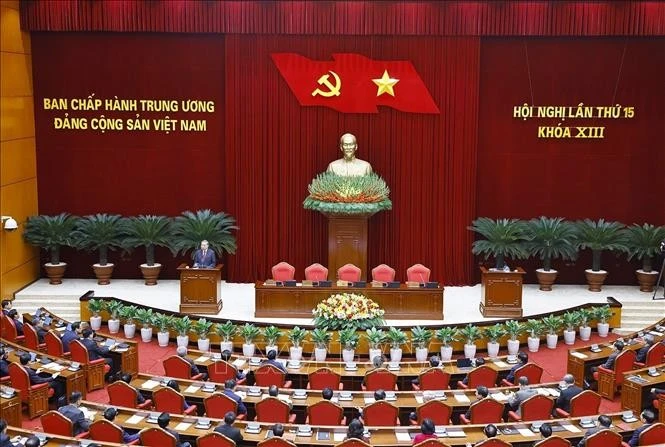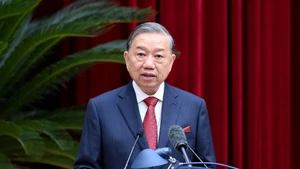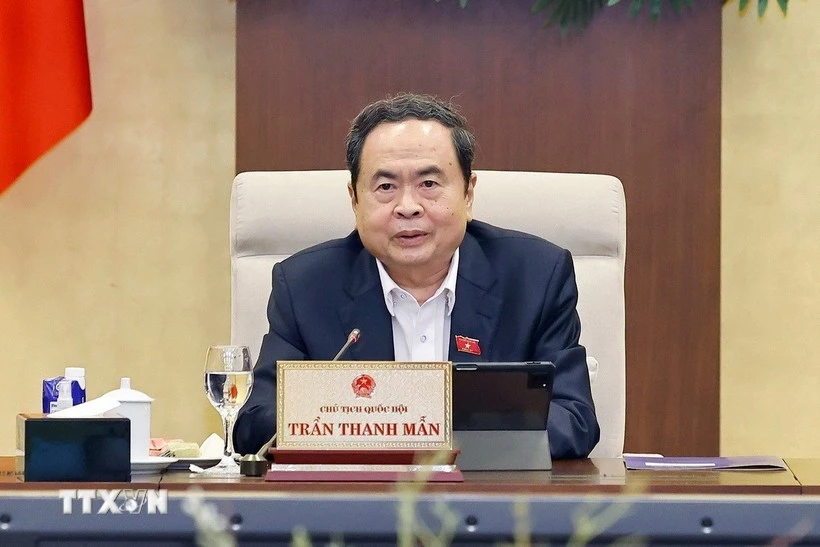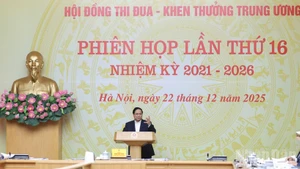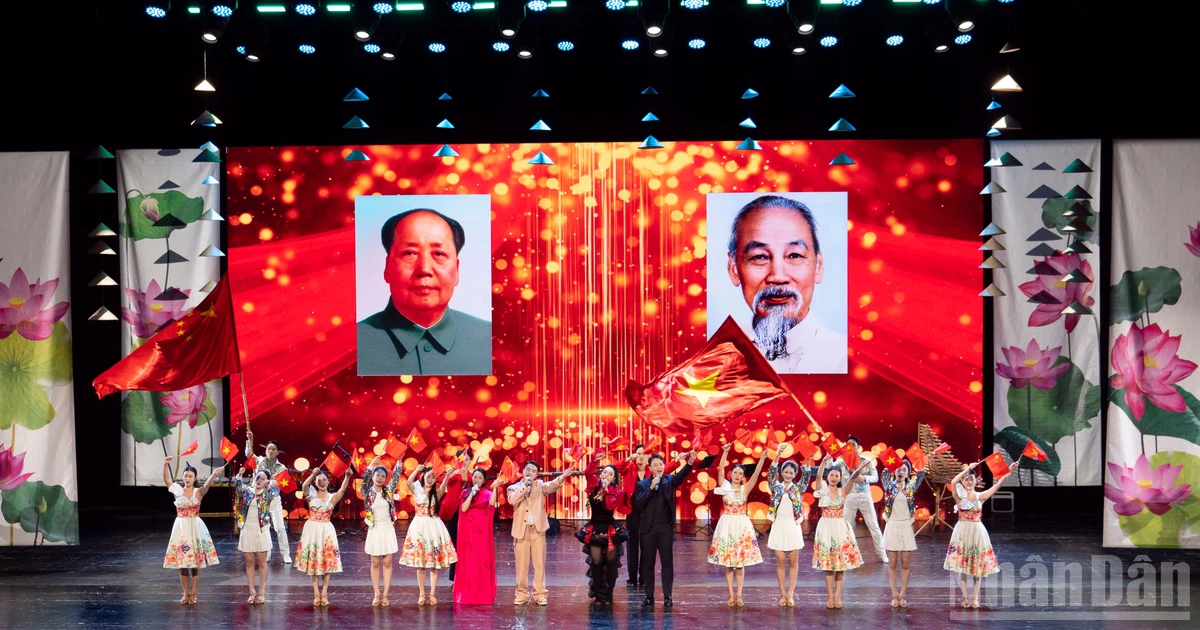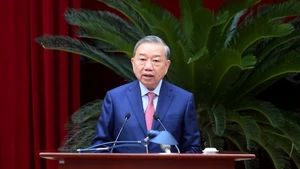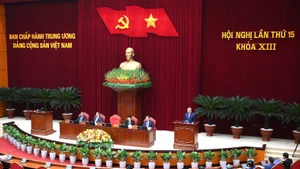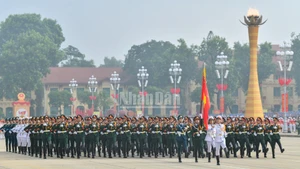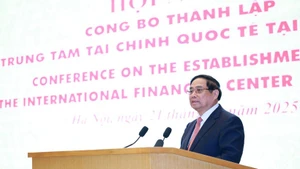The common denominator in all of this is patriotism and an indomitable spirit of struggle, under the wise leadership of the Vietnam Workers’ Party (now the Communist Party of Vietnam), headed by the great President Ho Chi Minh.
Part 1: The aspiration to reunify North and South
Exactly 50 years ago, the revolutionary flag was raised atop the Independence Palace at noon on April 30, 1975, marking the resounding success of the Ho Chi Minh Campaign. The complete liberation of the South and the reunification of the country was a monumental victory after 21 years of resistance war. Looking back over the past 50 years, we take great pride in those glorious feats that shook the world and opened a new era — the radiant Ho Chi Minh Era.
Two banks of the demarcation line
Following the 1954 Geneva Accords, millions of Vietnamese families were torn apart. Along the 17th parallel alone, about one million people migrated from the North to the South, mainly through American-backed operations. Conversely, over 140,000 officials, soldiers, students, intellectuals, and artists gathered in the North, carrying with them the deep yearning to one day return to a unified Vietnam.
In his home on Doc Ngu Street in Ba Dinh, Hanoi, veteran journalist Ha Dang — former Party Central Committee (PCC) Member, Editor-in-Chief of Nhan Dan Newspaper, and Head of the PCC Commission for Ideology and Culture (now the PCC Commission for Information, Education and Mass Mobilisation), at the age of 96, still remembers the historical days of 70 years ago. At that time, he was a reporter for Nhan Dan Newspaper in Interzone 5. On 16 May 1955, as the 300-day assembly period ended, he boarded the last ship from Quy Nhon to the North with his comrades.
The Polish ship Kilinski carried the group to Sam Son. From there, Ha Dang and nearly a hundred others cycled to Hanoi and began studying at Chem School. A few weeks later, he was reassigned to work at Nhan Dan Newspaper. He recalls that from the moment he assembled in the North, it took nearly twenty years before he and his brother Dang Minh Phuong (also a Nhan Dan reporter) could return to their homeland (on April 30, 1975).
Mai Liem Truc, former Standing Deputy Minister of Posts and Telecommunications, was among tens of thousands of Southern children and students who left Quy Nhon Port in 1954 to study in the North. He was only ten at the time. Now 81, he vividly remembers the night his family was notified of his departure. His mother stayed up all night sewing him a ba ba shirt, worried that he wouldn’t be used to the colder climate of the North. His journey from Quy Nhon took him to Thanh Chuong (Nghe An), Chuong My (Hanoi), Dong Trieu (Quang Ninh), and later to the German Democratic Republic to study radio engineering.
He recalls being deeply moved by the warm welcome Northern families gave Southern students. Initially, he lived with locals, with three or four students in each household. Though far from his family, he felt comforted by the Northerners’ care, from warming fires in the winter to steaming pots of sweet potatoes and cassava, despite the poverty of the time.
According to Truc, the boarding schools established in 1955 for Southern students were a special model that nurtured his generation both academically and morally. What he remembers most were his meetings with Uncle Ho in 1959 and 1962. He still remembers the president’s advice, especially on unity — unity among students from different regions, with children and people of the North.
He said teachers devoted themselves to raising Southern students to be fully developed individuals, teaching them to be honest, grateful, collective-minded, and selfless. As a result, when the South was liberated, most former Southern students returned to help take over and build up the revolutionary government, becoming key officials across all sectors.
This, Truc emphasised, reflected deep gratitude to the Party, Uncle Ho, and the people of both North and South, as well as a strong desire to contribute to building a prosperous and strong nation. It also showed the foresight of the Party and Uncle Ho, who recognised that national reunification would be an arduous struggle, and thus began preparing the future leadership force early on.
Though the pain of division remained, for the Vietnamese people, the Geneva Accords represented a historic victory.
According to Professor, Doctor of Science, and People's Teacher Vu Minh Giang, viewed from the perspective of Dien Bien Phu, our nation achieved an earth-shaking victory that ended the colonial war waged by the French and the intervention of American imperialists.
However, looking at the global context at that time, our position and strength were not yet sufficient to completely liberate the country. At a time when the American imperialists harboured ambitions to replace the French colonists, our Party and government had to plan for confrontation with a new and far more powerful force.
“In addition, we needed a period of recovery after nine years of resistance against the French. The North had to be built into a strong rear base to prepare the conditions for the next resistance war against the American imperialists,” Professor Vu Minh Giang observed.
The pain of separation
For Associate Professor, Doctor Hoang Chi Hieu of Hue University of Education, he transformed the pain of family separation into creative motivation by portraying history through his book “Doi bo gioi tuyen” (The two sides of the dividing line)(1954–1975).
Associate Professor, Doctor Hoang Chi Hieu was born in Trieu Phong (his paternal hometown) and grew up in Vinh Linh (his maternal hometown). Both are in Quang Tri Province, only about 40 km apart. And yet, it took his paternal grandparents, his father, and many other families in similar situations 21 long years to return home after regrouping to Vinh Linh.
Hien Luong Bridge – Ben Hai River became the dividing line between the two regions, temporarily splitting the country and separating millions of families. Doctor Hoang Chi Hieu’s book not only reconstructs history through documents from both sides and the testimonies of witnesses but also offers a profound cross-section of the losses and sacrifices endured by the Vietnamese people.
Returning to the historic land of Quang Tri, we met again with Hoang Thi Cham — a former guerrilla from Trung Hai Commune — on the Southern bank of the Ben Hai River. Now 76 years old and living in Xuan Long Hamlet, Trung Hai Commune, Gio Linh District, she has been nominated by Quang Tri Province for the title of Hero of the People’s Armed Forces.
More than 50 years ago, on September 15, 1973, she was honoured to shake hands with President Fidel Castro of Cuba when he visited the liberated zone of Quang Tri. It happened right on the “McNamara Electronic Fence.”
At that time, Cham was a renowned and courageous guerrilla fighter of Trung Hai Commune, a commune located along the Southern bank of the Ben Hai River, near the Doc Mieu base — a key location in the McNamara Line, intended to cut off supplies from the North to the Southern front.
Her daily mission was to snipe at enemy troops stationed at the Doc Mieu base. She was such an accurate sniper that her name became a nightmare for the enemy. Between 1967 and April 1972, she was commended nine times for her sniper achievements.
On the Northern bank of the Ben Hai River lies Hien Thanh Commune, Vinh Linh District. Back then, Vinh Linh was the frontline of socialist North Vietnam, the direct rear base for the Southern front, and the most intense battlefield between our forces and the enemy.
The Party and President Ho Chi Minh had plans to send Vinh Linh students to the North to protect them from bombing and to train them as “red seeds” for the country after peace was restored.
Le Thi Van, daughter of Heroic Vietnamese Mother Nguyen Thi Em (from Tan Truong Hamlet, Hien Thanh Commune), emotionally recounted:
On 27 September 1967, a vehicle carrying 40 students from Vinh Hien Commune (now Hien Thanh) departed Vinh Linh. When it reached the My Trung area in Gia Ninh Commune, Quang Ninh District, Quang Binh Province, the vehicle was hit by American bombs, and 39 students were killed instantly — among them was her older brother, a teacher, and two guards.
During those sorrowful years, alongside the people of Quang Tri, the Le Tich family, Van’s lineage, all took up arms to defend the homeland.
After national reunification, only three families from the Le Tich lineage remained in Hien Thanh Commune, with 17 martyrs buried in the local cemetery.
Their blood and bones soaked into the earth, contributing to the resilience and indomitable spirit of Quang Tri. The contributions, sacrifices, and losses of the Le Tich family symbolise the immense devotion and sacrifice of the Quang Tri people to the nation.
During these historic April days, many domestic and international tourists visit the Hien Luong – Ben Hai Special National Monument. “Ben Hai River, one side clear, one side muddy — Who caused our land to be torn in two?”
That haunting folk verse still echoes deeply in the hearts of many today.
Nowadays, visitors walking across the Hien Luong Bridge over the Ben Hai River need only a few minutes.
But to achieve this brief moment of happiness, many gave their entire youth, shedding blood and tears to reunify the country and bring the mountains and rivers under one flag in April 1975.
Understanding the pain of division and the sacrifices of earlier generations in the great resistance war helps today’s generation more deeply appreciate the value of peace, independence, and national unity.
